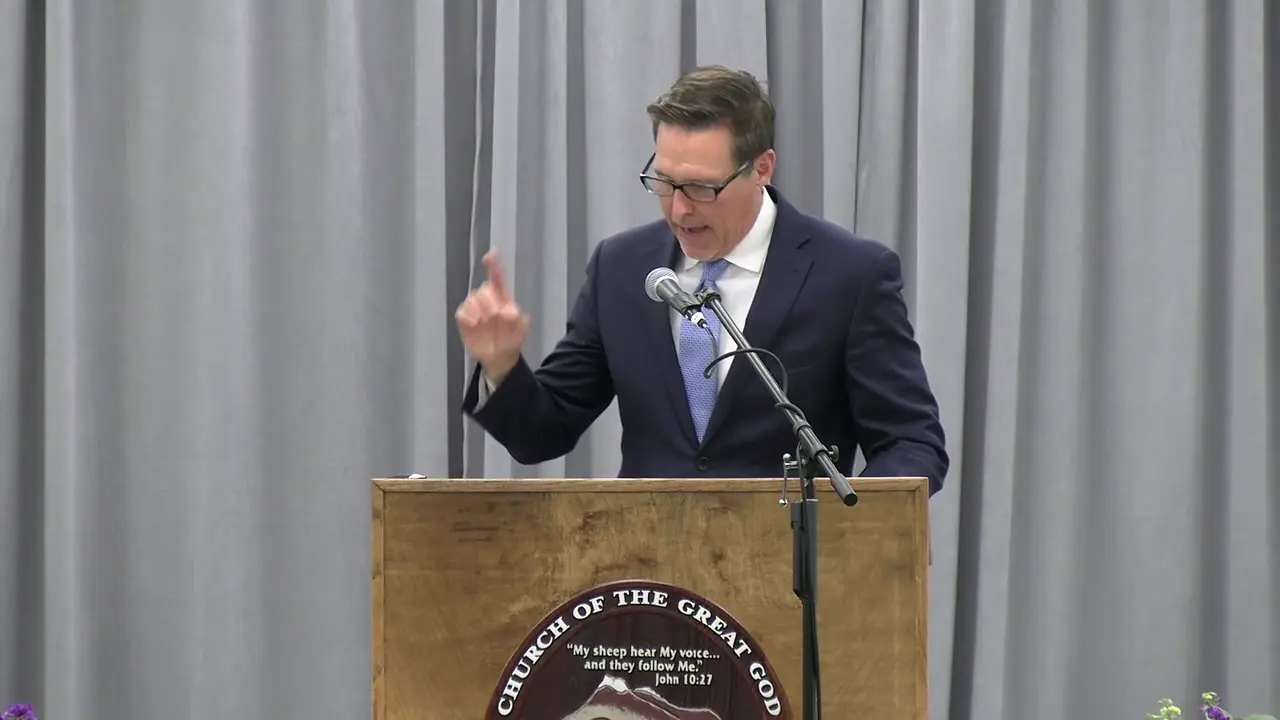Filter by Categories
Do You Have Enough Oil? (Part One)
CGG Weekly by David C. GrabbeIn the account of Jacob, oil is first mentioned when he poured it on a stone, an act later described by God as anointing the pillar. Anointing signifies to daub or to smear, precisely what Jacob did with the oil on the stone. This act of pouring oil on a rock, used as a pillow after an awe-inspiring dream, underscores the significant symbolism of oil in these events.
Do You Have Enough Oil? (Part Two)
CGG Weekly by David C. GrabbeThe Hebrew word for oil, shemen, literally means fat or grease, but figuratively, it conveys richness and fruitfulness. Oil symbolizes wealth, abundance, health, energy, and a vital ingredient for a good life. In ancient times, its primary use was for food, providing more energy than carbohydrates with fewer byproducts when metabolized. Beyond nourishment, oil served as fuel for lamps, as medicine, and as a protective and nourishing agent for skin and scalp in dry, desert regions. It was also used in the consecration of sacred people and things, as commanded by God, and as an ingredient in offerings. For the people of that era, olive oil was akin to liquid gold, sometimes functioning as a form of currency due to its lasting value when properly stored. Biblically, abundant oil signifies prosperity, while a lack of it indicates famine and hardship. Excessive use of oil represents wastefulness, whereas saving it characterizes wisdom. The multifaceted uses and value of oil highlight why it symbolizes richness, fruitfulness, abundance, and vitality, often paralleling the spiritual abundance poured out by God. In the context of Jacob's experience at Bethel, God's visitation transformed him, initiating a relationship that brought true abundance, akin to pouring fine oil on a common rock to set it apart. Similarly, God invites His people to partake in His richness and fruitfulness without cost, urging them to focus on Him rather than on fleeting matters. By seeking God and calling upon Him, lives are enriched in ways material wealth cannot match, as if God is pouring precious oil upon them. This abundance is nurtured through a covenant with Him, a protective and fruitful relationship grounded in seeking to be like Him and fellowshipping with Him.
Do You Have Enough Oil? (Part Three)
CGG Weekly by David C. GrabbePhysical oil symbolizes wealth, abundance, health, energy, and a vital ingredient for a good life. It also represents spiritual abundance, which is only possible through what God provides. This oil is acquired through listening to God, delighting in what He gives, and seeking to be like Him. The abundance that comes from knowing God and His way accrues gradually over a lifetime of faithful seeking, with no shortcuts available. The oil that matters accumulates through consistent pursuit of God and His spiritual richness. The foolish virgins lacked enough oil because they did not pursue God and His spiritual abundance throughout their lives. They were not prepared, having failed to earnestly and consistently seek the Source of the oil as their conscious mode of life. In contrast, the wise virgins ordered their lives to know God, spiritually enriching over time. The oil symbolizes not only spiritual abundance and fruitfulness from God but also the richness that comes from seeking Him and being faithful to the covenant. This abundance arises from fellowshipping with Him and taking on His image. Buying this oil costs time and attention, requiring lives wholeheartedly devoted to God and fellow man rather than to self or worldly things. God's oil comes neither cheaply nor quickly, but having it symbolizes being spiritually ready to inherit His Kingdom. Becoming ready for the Kingdom means being in His image, leading to lives of spiritual abundance, energy, richness, and fruitfulness, as symbolized by oil.

The One Thing
Feast of Tabernacles Sermon by Bill OnisickSacrifice is the foundational principle for salvation and spiritual growth, as exemplified by Christ's preordained sacrifice before the world's creation.
Examine Yourself
Sermon by James BeaubelleJesus kept the two great commandments flawlessly, providing us an example. These two great commandments are where most of our self-examination should revolve.
The Sacrifices of Leviticus (Part 4)
Sermon by John W. RitenbaughThe meal offering represents the second Great Commandment, love toward fellow man. Our service to others requires much grinding self-sacrifice and surrender.
Parable of the Ten Virgins (Part Two)
Bible Study by Martin G. CollinsThe Parable of the Ten Virgins is prophetic concerning the attitude of Christians at the end time. The wise and foolish virgins each have things to teach us.
The Offerings of Leviticus (Part Three): The Meal Offering
'Personal' from John W. RitenbaughThe meal offering represents the fulfillment of the second great commandment, "You shall love your neighbor as yourself." Here is how to understand this offering.

The Seven Churches (Part Ten): What Now?
Bible Study by Richard T. RitenbaughThe Bible indicates all seven churches of Revelation will exist at the end, but do God's people have hope for a bright future? Will Christ reunite His church?
Offerings (Part Three)
Sermon/Bible Study by John W. RitenbaughThe meal offering (grain offering) represents fulfilling our duty to our neighbor. he materials used in the meal offering symbolize Jesus' perfect character.

The Two Wave Loaves of Pentecost
Sermon by David C. GrabbeThe offerings of the Old Testament are like divine parables, acted out to teach about the Messiah, unveiling a beautiful picture once we understand the symbols.
God's Warning
Sermon by John O. ReidTo watch world events but to ignore our spiritual progress and overcoming is a foolish and futile exercise. We need to watch how we conduct ourselves.

God's Two Witnesses
'Prophecy Watch' by Richard T. RitenbaughWho fulfills the roles of the Two Witnesses? Revelation 11 and Zechariah 4 shed light on the early work and fundamental character of these end-time prophets.
Praying Always (Part Two)
Article by Pat HigginsIn Luke 21:36, our Savior gives us two essential keys to being accounted worthy and escaping the terrors of the close of the age: watching and praying always.
A Vision of Eternity
Sermonette by Austin Del CastilloThough we currently dwell in a temporary fleshly tent, we will be ultimately clothed in a permanent spiritual body, able to see God the Father and Christ.
The Two Witnesses (Part Five)
Sermon by Richard T. RitenbaughThe olive trees in Zechariah 4:11 refer to the Two Witnesses who pour oil (spiritual instruction) into a golden bowl, supplying the churches with nourishment.
Revelation 10 and the Church's History
Feast of Tabernacles Sermon by John W. RitenbaughRevelation 10 contains the seven thunders and the little book. It serves as an inset, not following a linear time sequence of the book of Revelation.
Our Ultimate Purpose
Sermonette by Austin Del CastilloWhen we follow the commandments, it should be to primarily strengthen the relationship out of love, not to merely gain an advantageous position or be saved.
The Road Not Taken
Sermonette by James C. StoertzAfter standing still, waiting for God's decision for us, we must diligently move forward as God draws us, taking the opportunity of acquiring more of God's Spirit.